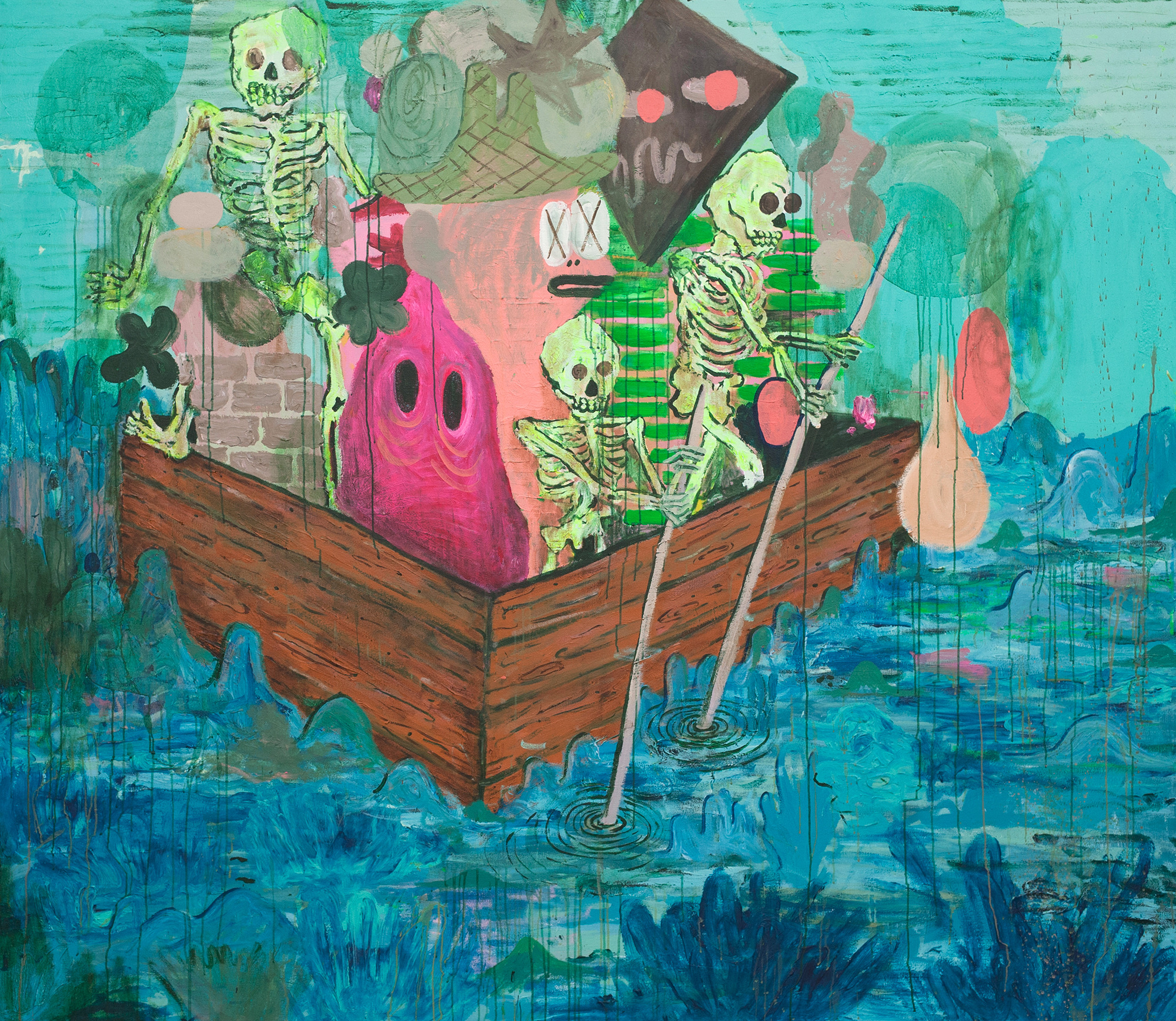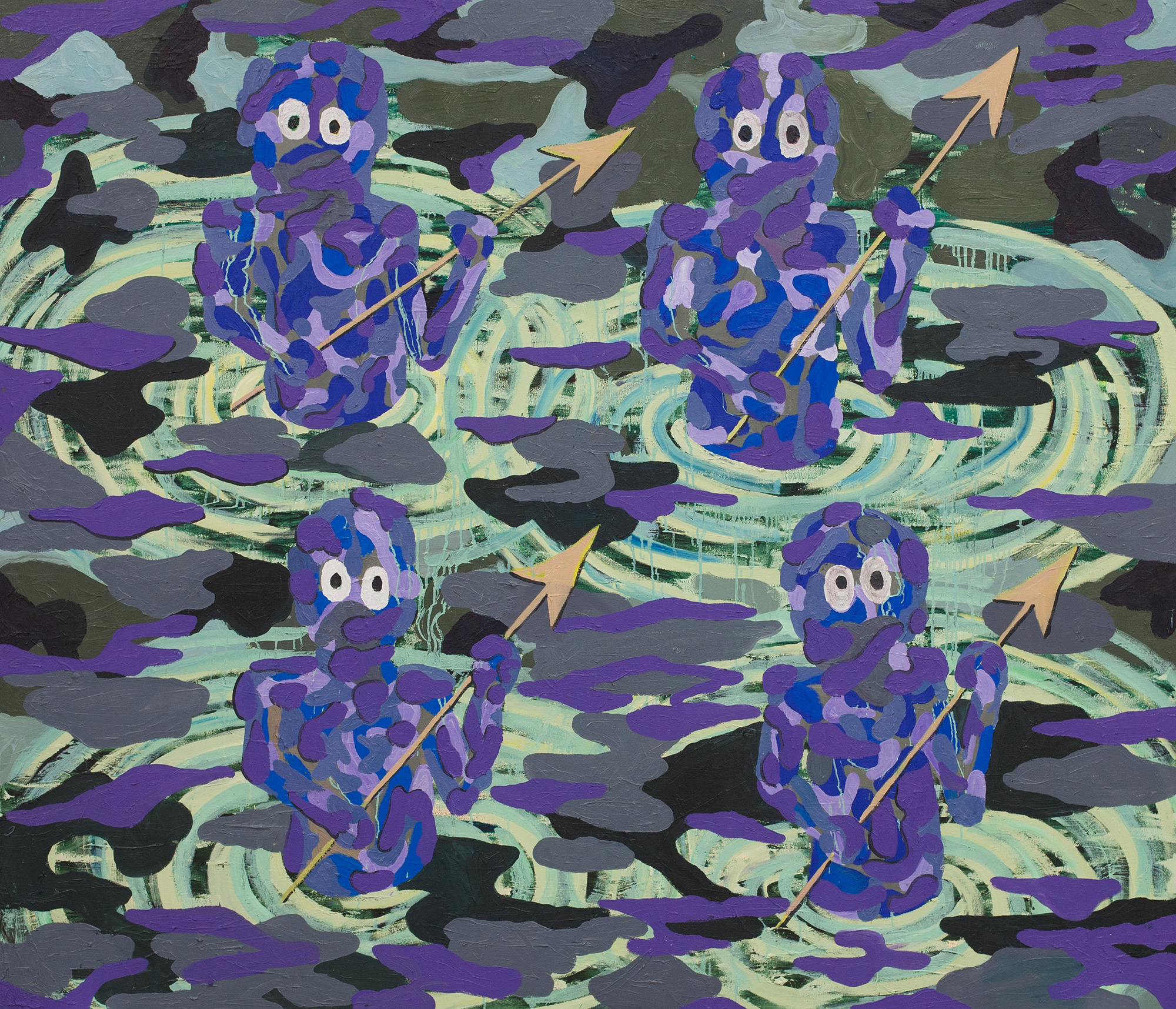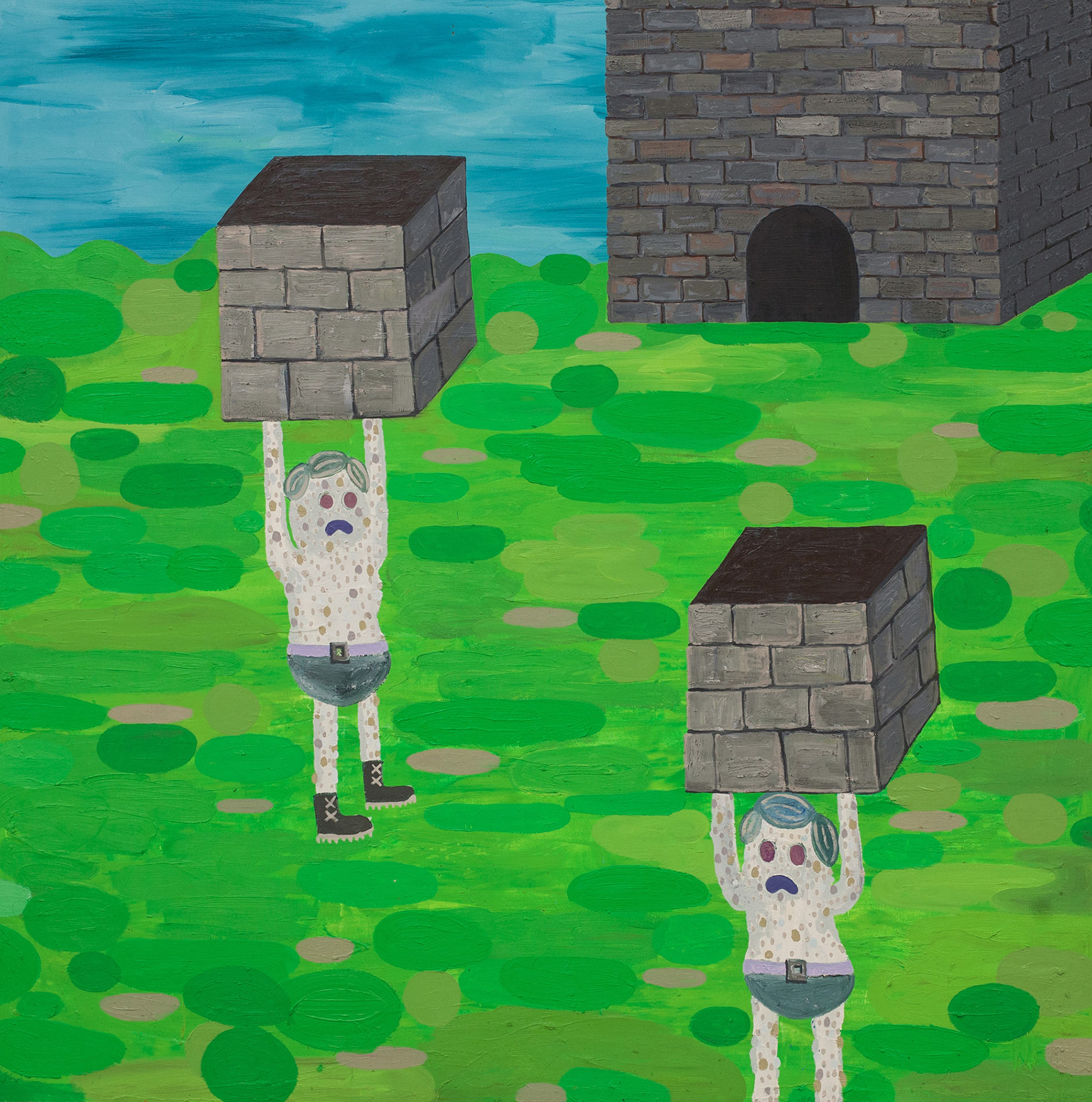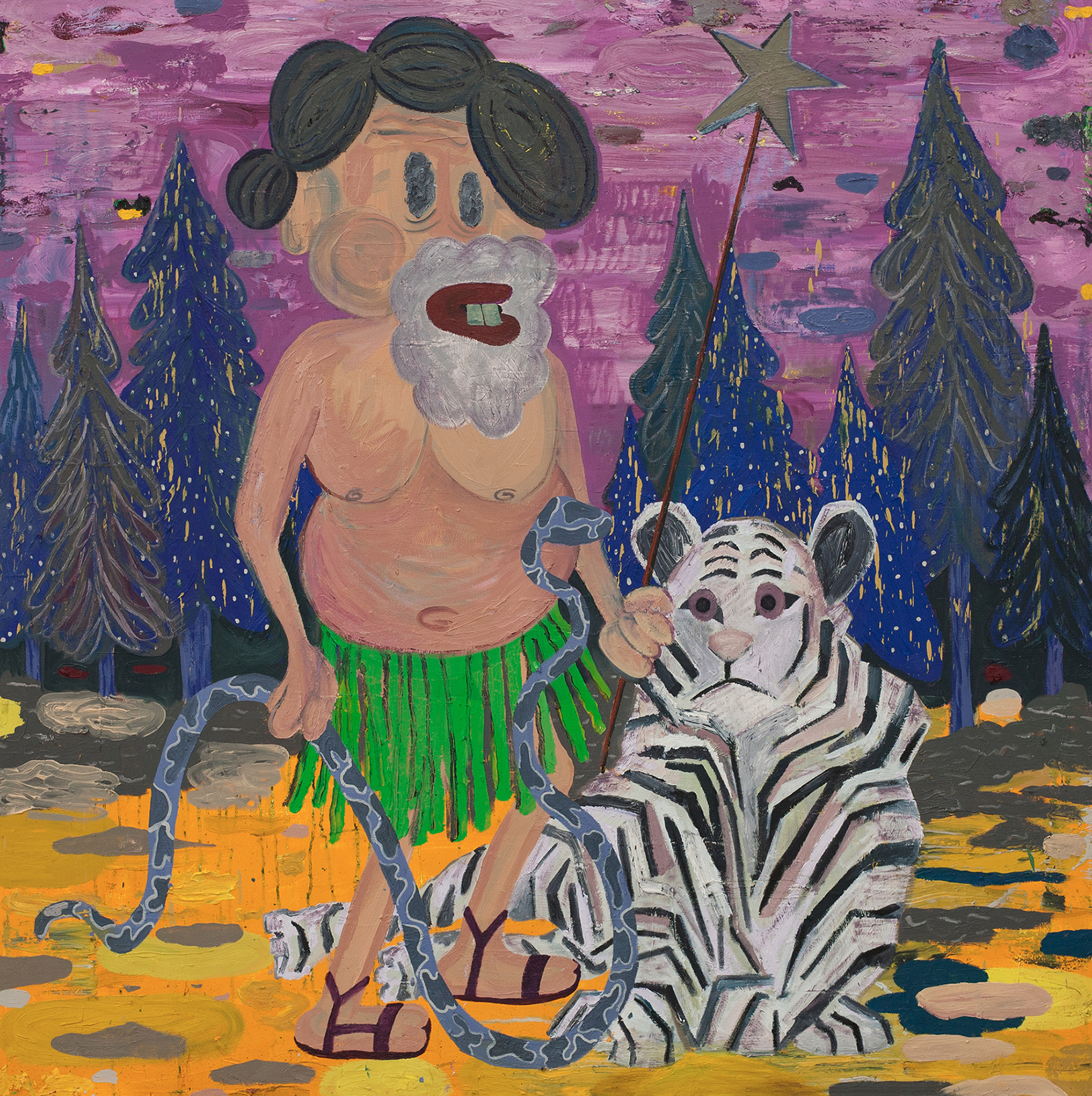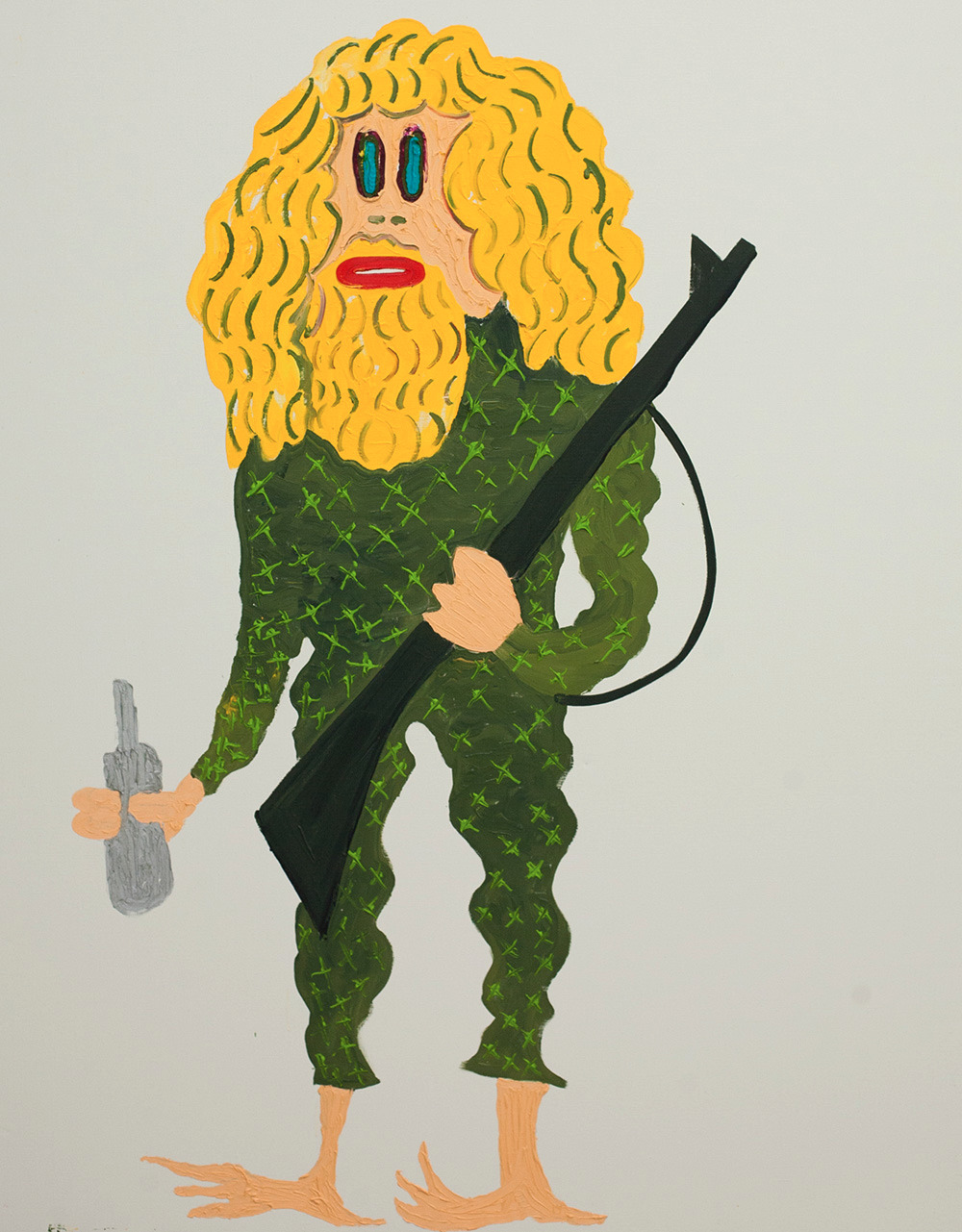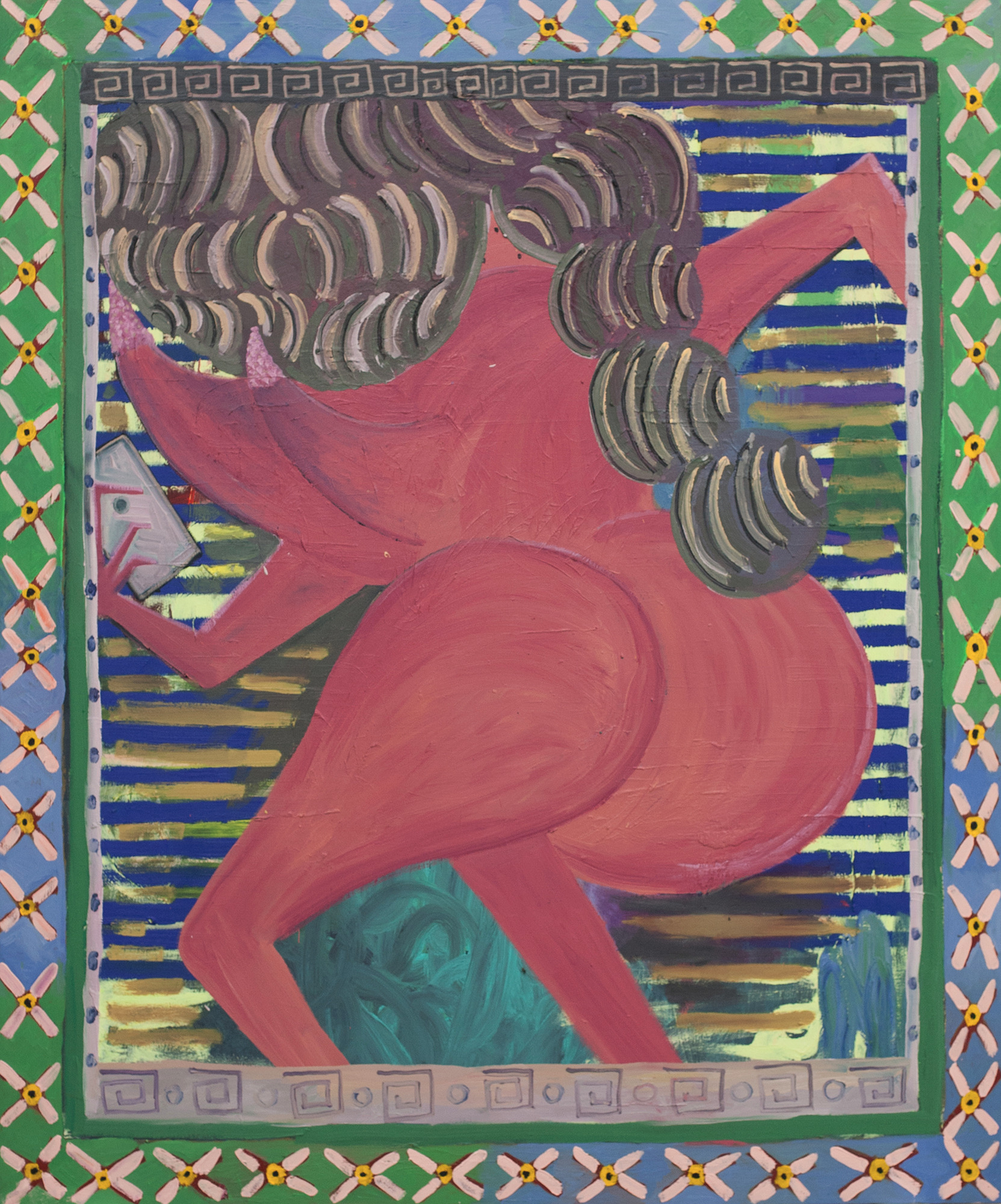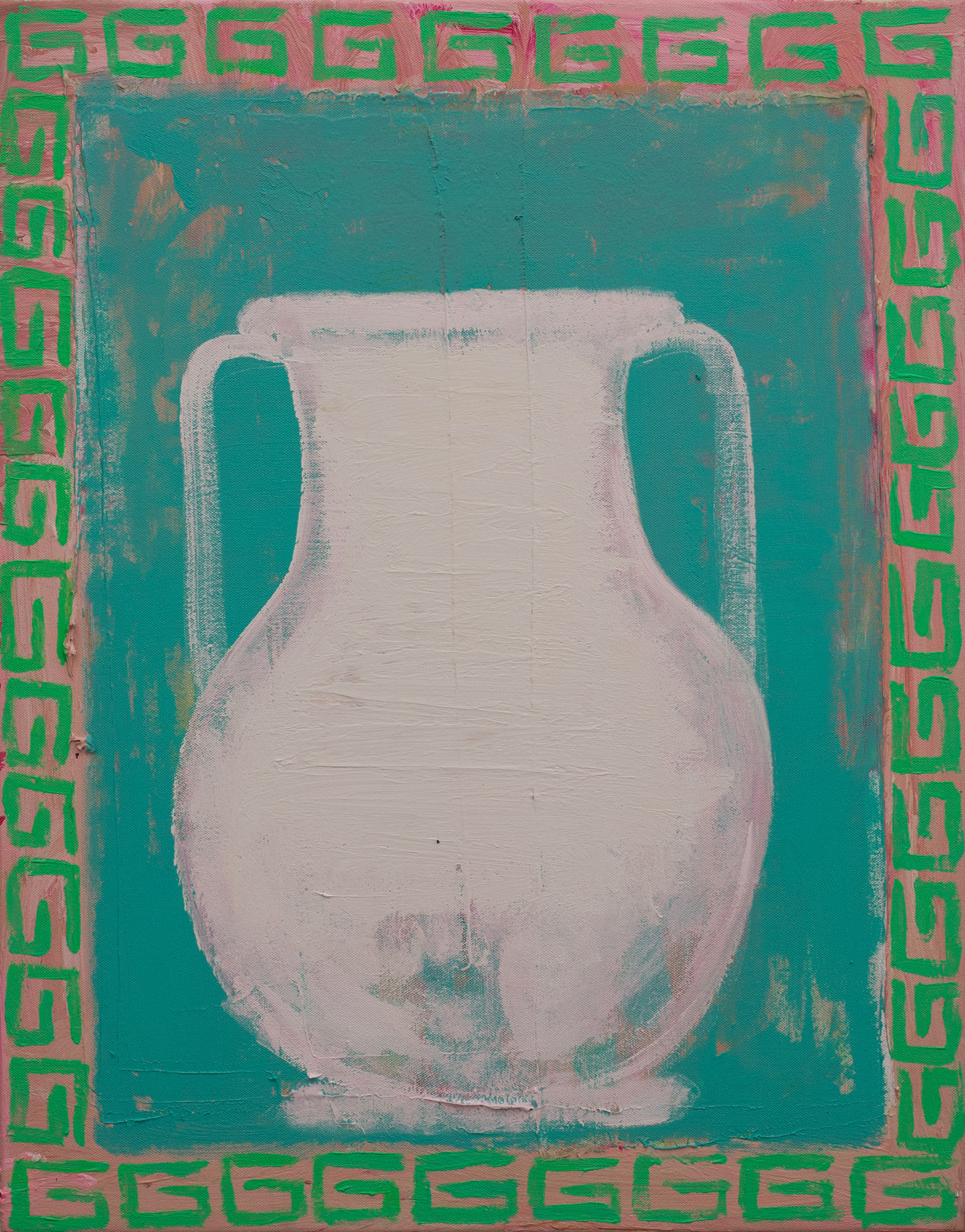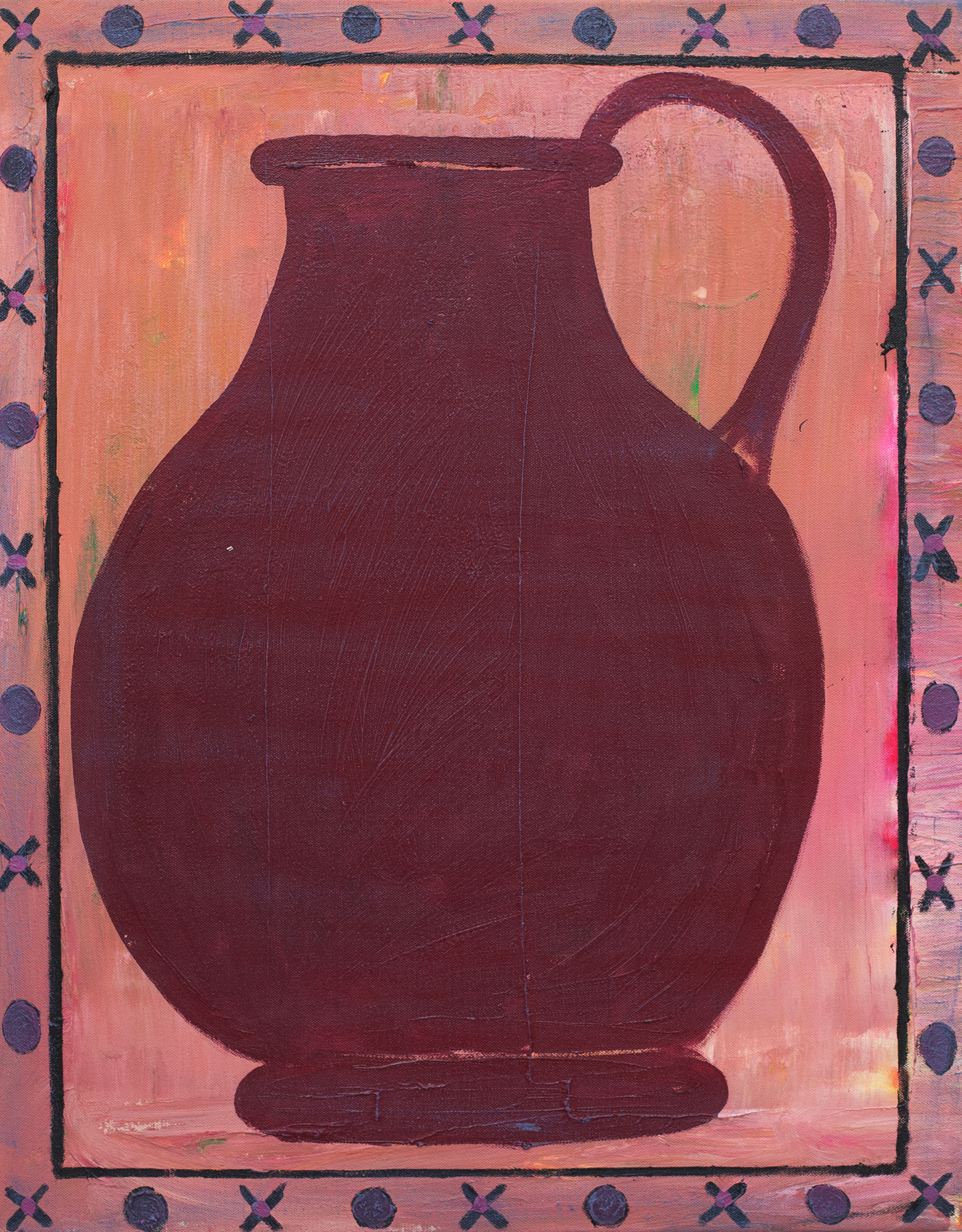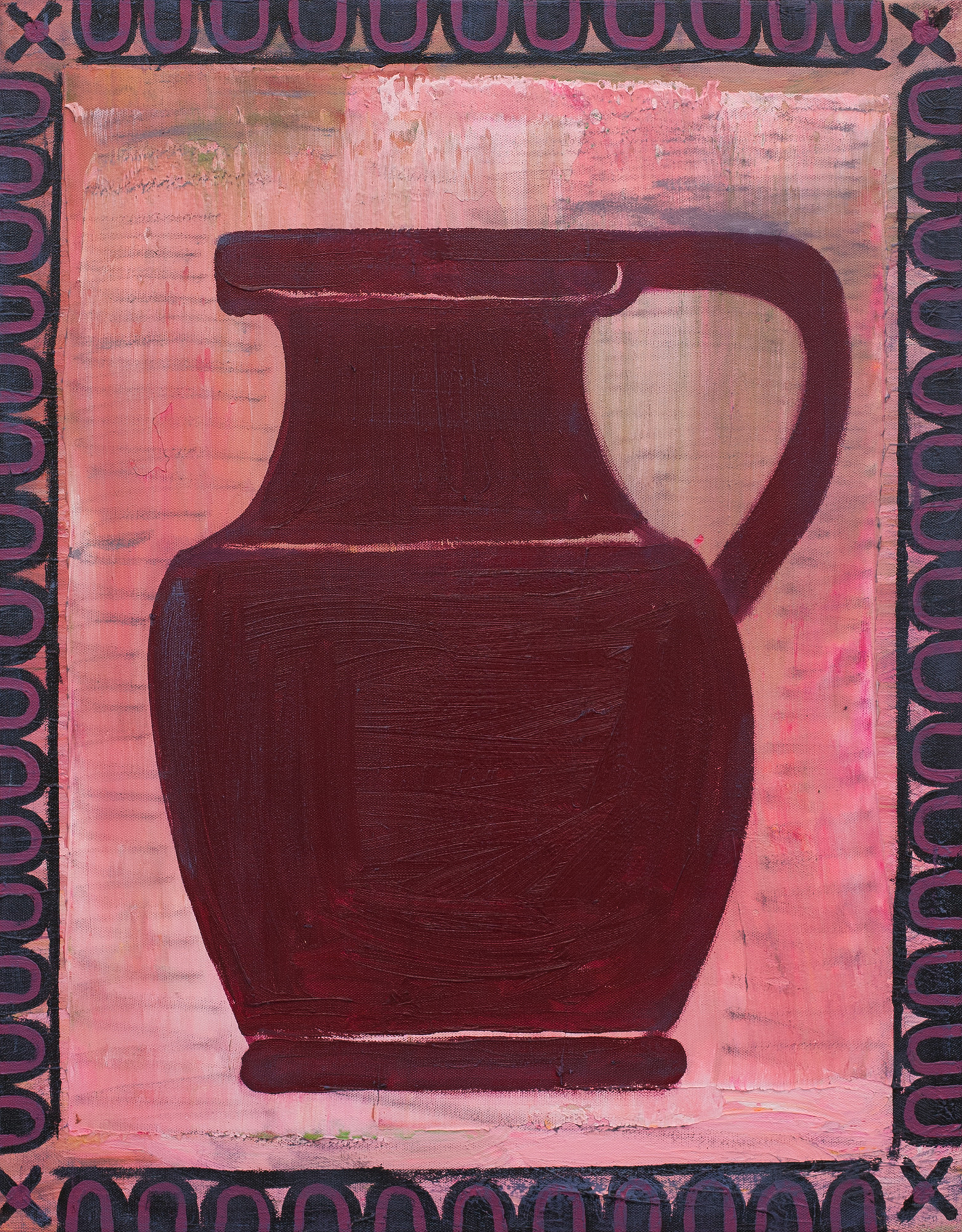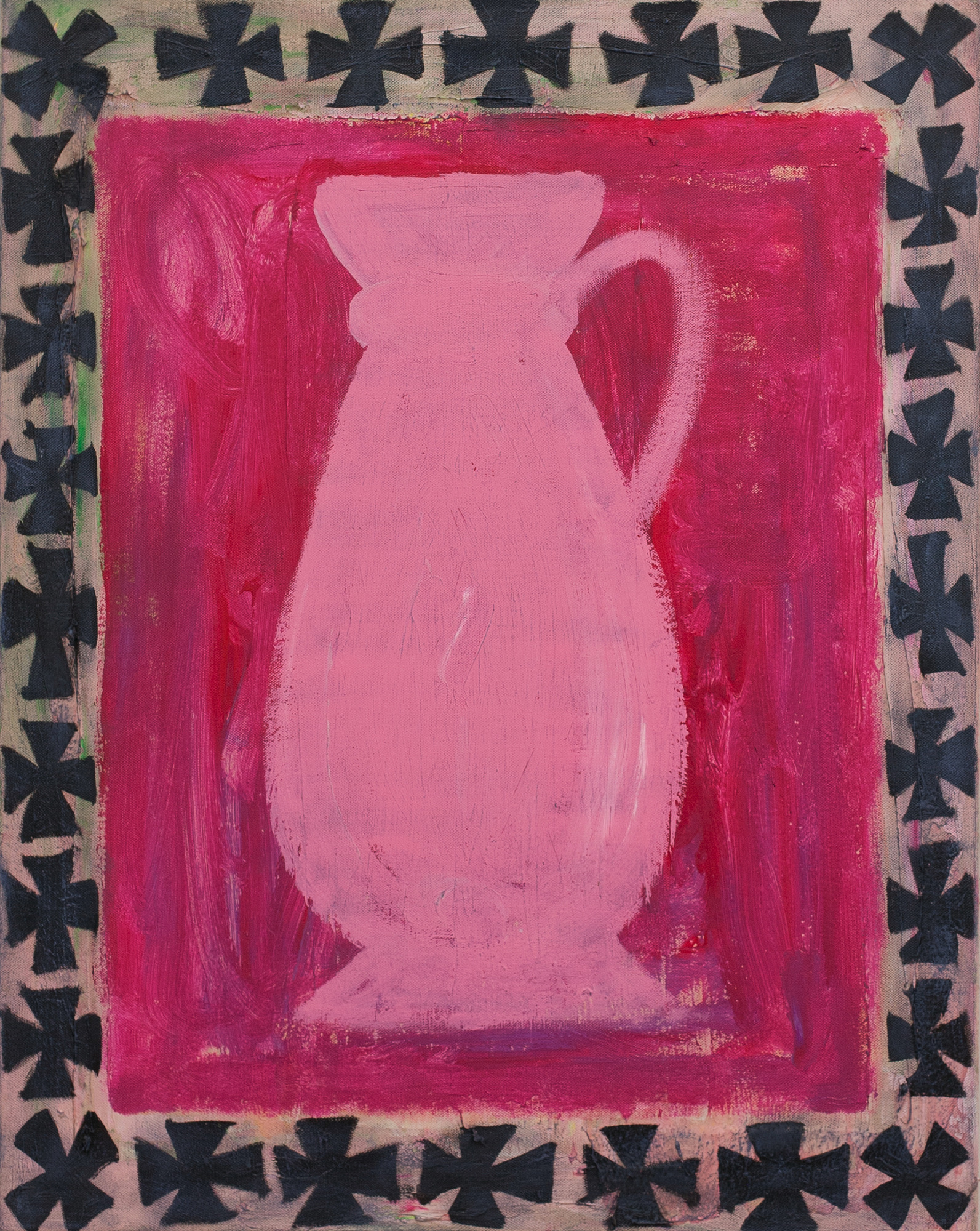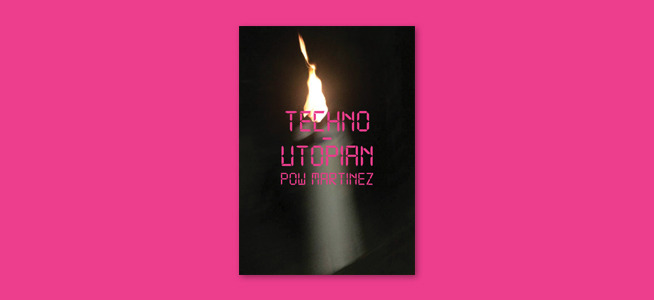
Techno-Utopian
Pow Martinez
Silverlens, Manila
Installation Views
About
Pow Martinez' Techno-Utopian is a strategy of surface reading and informational speen to enhance conceptual application of time, form, scale, and movement done through painting in order to test the limits of its interpretation and exchange. It coincides with Martinez’ sound experiments through electronic music which creates a barrier of endurance and taste. Boldly, Martinez ponders on the fetish for technology, or the skeptical brand of utopian ideals and its prosthetic arm of progress, pitting technology against a theory of the taboo.
Straddling between two-dimensionality (pointing to the reality of the paint- ing), and volume (the task of illusionistic representation), the paintings (especially that of the classical urns) are not mere signifiers of decoration – markers for the emptiness of space with an unnecessary and yet effective means of just showing something present: like a memento of the departed who is no longer with us but continues to live in eternal memory; relatively, putting all this to mind brings a critical discourse about absence - how images become substitutes for the real thing, and with that the task of painting as a receptacle for representation. Painting’s custom is to provide us with a descriptive picture, the more deceptive as an illusion the better they say for it to merit any value on skill. Martinez’ paintings accomplishes what it seeks, neither a fidelity to realism nor a certifying approval from the middling many; instead, the chase for Mar- tinez is towards de-skilling, a late-conceptual answer to how we should use painting today thoughtful of the rumor of its demise as a practice for self-authenticity and its art historical obsolescence. Overall, Martinez follows a graphic but primitivist approach to his paintings: putting an emphasis on line and shape, with the rendering flat and prone to exaggerations with cartoon-like proportions. Philip Guston comes to mind in com- parison, with both using the vulgarity of the paint material in pushing it to extremes as abstraction, then forcing its energy into a body that creates a hysterical mutation.
Martinez’ paint handling this time around isn’t as thrown with wildly abandon as he perfunctory does in previous work. Rather, there seems to be a certain cunning restraint running in the pictures that allows the painterly gestures to remain steady, organized rather than allover, generative rather than hermetic, well-designed rather than random. Over-reading the pictures, one could say they mimic the drone of the noise he tinkers with involving sound and music when he’s not painting, or the look of absurdity taken from bit-mapped computer games which appeals to Martinez’ ex- istentialist approach to expression – bored with banality/flipping over fantasy, or just perhaps, Martinez is reaching artistic maturity for him to brush up his painter’s forms, the way Guston did in moving away from the muck of abstract expressionism and towards a unique figurative/narrative style which nobody figured out until late, in order to articulate a language fit for today’s post-internet vibe, reconciling subjectivity with a critical distance without loss of cool sarcasm vital for the neo-avant-garde.
In Techno-Utopian, Martinez paints a culture that eats itself, like cannibals leaving reason behind just to satiate its interests, present- ing a shell of humanity that we strangely know less despite our speeding towards it. He depicts this cannibalizing culture as a form of critique over material competition, on the survival of the fittest; while on the other hand also, a metaphor for radical renewal and change, for the transubstantiation of the everyday into a form of augmented reali- ty - painting as simulation, as artificial consciousness, life viewed off kilter from the other side. The paintings present a radical statement of the post-human condition where its protagonists mime the rituals of everyday life absent of essential meaning that is replaced by technology and other forms of social capture. They create a semblance of the norm as they go about in long cycles of time withdrawn, in repose, taking “selfies” or checking messages naked, toiling mindlessly picking up blocks, armed but uncon- cerned with the politics of the day. At best they are a cartoon version of ourselves, an exaggerated reflection removed from the real, a computerized game of chance and compromise, in comical form, providing laughter at the pitfalls and contortions we all perform in the quest for material satisfaction, need, desire, and survival. Martinez in- cites the viewer with an anxious look on the vanity of things measured by the speed of life and its offspring of alienation and social decay, exhibiting along the way a dose of paranoia by social contamination of the media type. Offering joy, the paintings turn into a stunning picture of existential agony, a quench in the thirst for meaning, a wel- come salute to the apocalypse. Pow Martinez has long been exploring these themes of droll absurdity and banality with an explosive expressionism that serves as an aes- thetic counterpoint to the zombie nightmare of tradition in the minds of the living and from the boredom of the unsuspecting status quo.
Words by Arvin Flores
Pow Martinez (b. 1983) is a Manila-based interdisciplinary artist. He studied Visual Communication at the University of the Philippines and Painting at the Kalayaan College. He holds degrees in Painting and Visual Communication. He won the Ateneo Art Awards in 2010. He has had solo exhibitions in Tokyo, Singapore, San Francisco, and been part of exhibitions in Berlin, Sete, and New York City as part of The Bastards of Misrepresentation curated by Manuel Ocampo.
Arvin Flores has an MFA graduate degree from The School of the Arts, Columbia University, New York NY, and a BFA from the College of Creative Studies, University of California at Santa Barbara. He has shown at The University of Massachusetts Amherst's Hampden Gallery, Columbia University's LeRoy Neiman and Wallach Art Galleries, Aljira Contemporary Art Center NJ, Southern Exposure Gallery CA, and Skyline College Art Gallery CA, and in Manila, at Artery Art Space, Vinyl on Vinyl Gallery, and at West Gallery. Flores also has done independent curatorial work, and writes as an extension of his creative and critical practice.
Works
